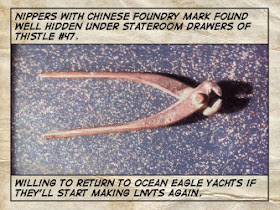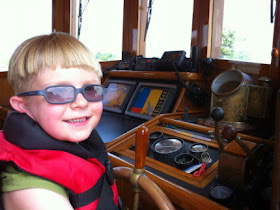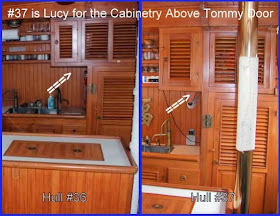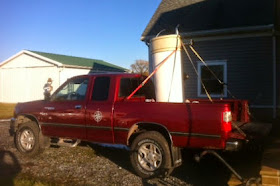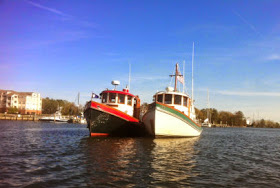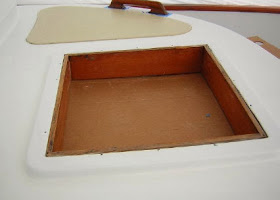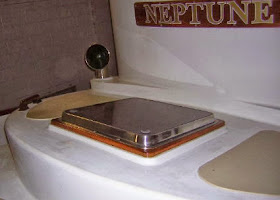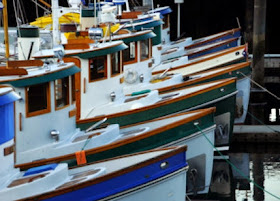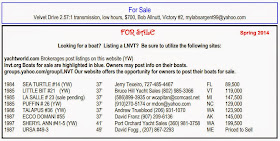 |
| Door jams being fiberglassed into place |
2. Cutting the door out carefully will save a lot of finish work. The thin kerf of a sawzall blade creates the perfect spacing between the bulwark's caprail and the door's caprail.
 |
| Filling and fairing the jam |
3. After the door is cutout, finish the bulwark part of the job first. The finished bulwark can then be used to size and trim the door--just don't touch the door's teak caprail ;-). The new jam, a 1/4" thick, pre-laid up, flat, fiberglass panel was cut to the shape of the door opening. Fiberglass mat was wetted out, as was the back of the panel and the jamb's bulwark cut. The mat was placed against the bulwark cut, the panel was placed on top of the mat. The panel was held tightly in place until the resin set up. In the picture you can clearly see that the mat is behind the panel. This same procedure was used for the threshold too.
4. Get hinges that don't have a lot of end play (i.e. axial movement between the leaves) or side play (the amount of movement of the leaves perpendicular to the pin). 'Loose' hinges will make your life miserable.
 |
| 15 degree bevel cut on the unhinged side |
5. Hinge the door on the forward side and have it open inwards. Hinging it forward means you won't have to walk past it when boarding and going aft toward the companionway. Hinging it to open inwards keeps the door safe from docks and pilings.
6. Bevel cut (see picture below) the unhinged side. The door will fit tighter and look better.
7. Keep the fiberglass jam panel below the caprail. With the door closed the teak caprail should look continuous.
8. Put a strike plate or other support between the bottom of the door and the threshold. The strike plate supports the unhinged side of the closed door. Somebody, sooner or later, will walk on the door's caprail and without the strikeplate the hinges could be damaged.
 |
| A low profile latch as seen on Lady #8 |
9. Think about how best to finish-out the threshold. Big, expensive boats put in shiny stainless thresholds with the manufacturer's insignia on them. Lots of 'cool points' there. With a little forethought the same could be done here.
10. Choose a latch that that is both effective and doesn't stick out so much that it snags unsuspecting passers-by.






.JPG)




















